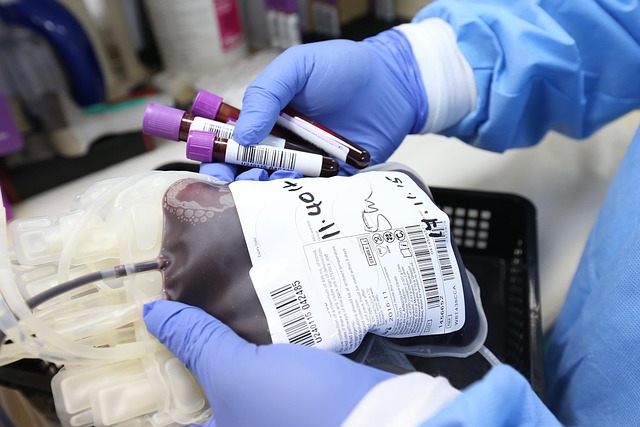Recognizing the Symptoms of Amyloidosis and Why Early Detection is Essential
Amyloidosis. The name itself sounds complex, and perhaps that’s part of the problem. It slips under the radar precisely because it's hard to pronounce, let alone understand. But beneath that clinical word lies a potentially life-threatening condition that thrives on being underestimated. Often dismissed or misdiagnosed, amyloidosis is a rare disease that can wreak havoc quietly, progressively disrupting organs until it's too late.

What is Amyloidosis?
Amyloidosis encompasses several different types of diseases, all characterized by the accumulation of misfolded proteins that form fibrous deposits in various organs. The most common types include AL amyloidosis, which affects the heart, kidneys, liver, and nervous system, and AA amyloidosis, typically associated with chronic inflammatory conditions. These protein deposits gradually interfere with normal organ function, causing symptoms that can be subtle initially but become progressively more severe over time.
The condition can be systemic, affecting multiple organs simultaneously, or localized to specific areas of the body. Primary amyloidosis occurs without an underlying disease, while secondary amyloidosis develops as a complication of other conditions such as rheumatoid arthritis, inflammatory bowel disease, or chronic infections.
Who Is at Risk?
Several factors can increase an individual’s risk of developing amyloidosis. Age plays a significant role, with most cases occurring in people over 60 years old. Men are slightly more likely to develop certain types of amyloidosis than women. Individuals with chronic inflammatory diseases, such as rheumatoid arthritis or inflammatory bowel disease, face an elevated risk of developing AA amyloidosis.
Genetic factors also contribute to risk, particularly for hereditary amyloidosis, which can affect the heart, nerves, kidneys, and other organs. People with a family history of amyloidosis should be aware of their increased susceptibility. Additionally, individuals with plasma cell disorders or multiple myeloma have a higher likelihood of developing AL amyloidosis.
Why Early Detection is Critical
Early detection of amyloidosis is crucial because the condition often presents with vague, nonspecific symptoms that can be easily attributed to other conditions. By the time obvious symptoms appear, significant organ damage may have already occurred. Prompt diagnosis allows for earlier intervention, which can slow disease progression and improve patient outcomes.
The symptoms of amyloidosis vary depending on which organs are affected. Common early signs include unexplained fatigue, shortness of breath, swelling in the legs and ankles, irregular heartbeat, and unintentional weight loss. Patients may also experience numbness or tingling in the hands and feet, changes in skin appearance, or difficulty swallowing.
Recognition of these symptoms and seeking medical attention promptly can make a substantial difference in treatment effectiveness and long-term prognosis.
Diagnostic Tools and Tests
Diagnosing amyloidosis requires a combination of clinical evaluation, laboratory tests, and imaging studies. Blood and urine tests can detect abnormal proteins and assess organ function. These tests may reveal elevated levels of specific proteins or markers indicating organ involvement.
Tissue biopsy remains the gold standard for confirming amyloidosis diagnosis. Doctors may perform biopsies of affected organs or more accessible tissues like fat or bone marrow. Advanced imaging techniques, including echocardiograms, MRI, and specialized cardiac imaging, help evaluate organ involvement and damage.
Genetic testing may be recommended for patients with suspected hereditary amyloidosis or those with a family history of the condition. These comprehensive diagnostic approaches help determine the specific type of amyloidosis and guide appropriate treatment strategies.
Treatment Options
Treatment for amyloidosis focuses on slowing or stopping the production of abnormal proteins and managing symptoms to improve quality of life. The specific treatment approach depends on the type of amyloidosis and which organs are affected.
For AL amyloidosis, treatment often involves chemotherapy regimens similar to those used for multiple myeloma, aimed at reducing the abnormal plasma cells that produce amyloid proteins. Stem cell transplantation may be considered for eligible patients. AA amyloidosis treatment focuses on controlling the underlying inflammatory condition that triggers amyloid production.
Supportive care plays a crucial role in managing amyloidosis symptoms. This may include medications to manage heart failure, protect kidney function, or address nerve pain. Some patients may require dialysis for kidney failure or other organ-specific interventions. Newer targeted therapies and medications that help stabilize proteins or break down existing amyloid deposits are showing promise in clinical trials.
Amyloidosis presents significant challenges due to its complex nature and varied presentations. Early recognition of symptoms, prompt medical evaluation, and appropriate diagnostic testing are essential for optimal patient outcomes. While treatment options continue to evolve, the key to successful management lies in early detection and comprehensive care tailored to each patient’s specific type and extent of disease.
This article is for informational purposes only and should not be considered medical advice. Please consult a qualified healthcare professional for personalized guidance and treatment.



